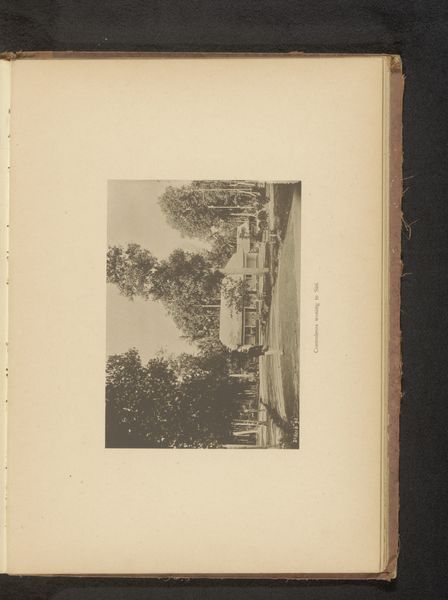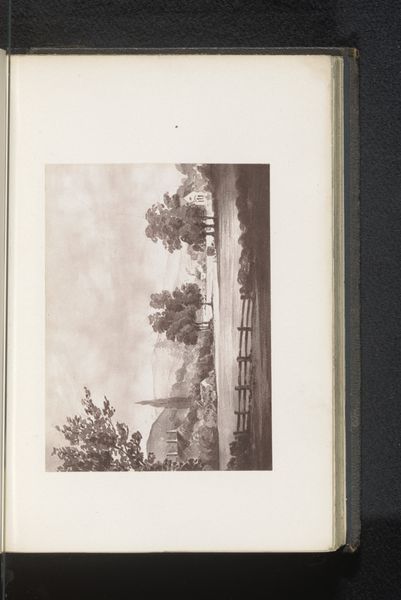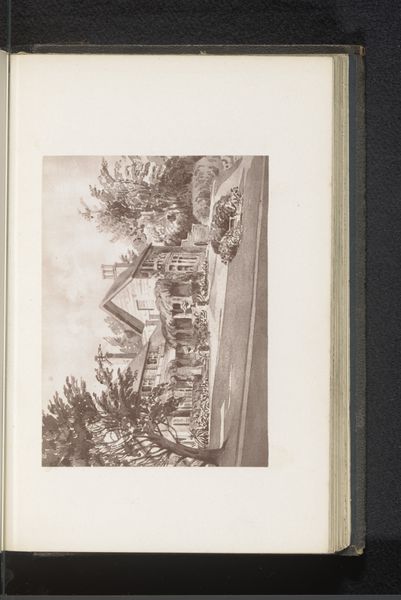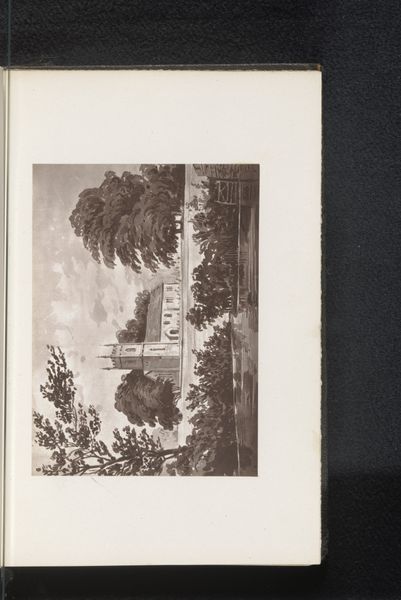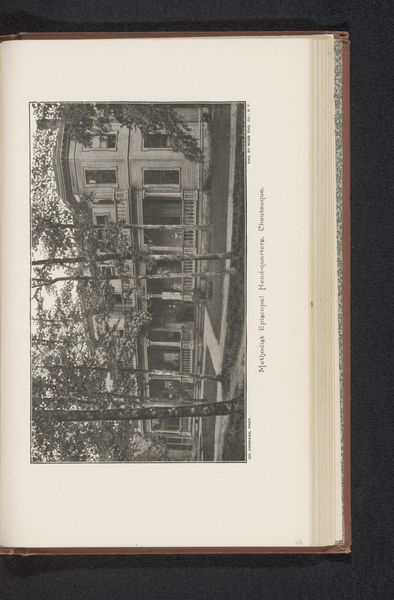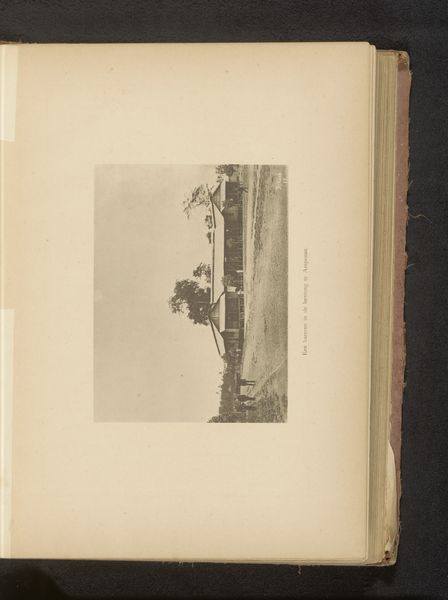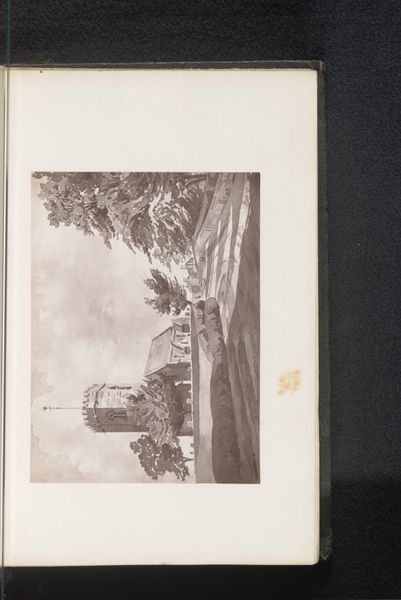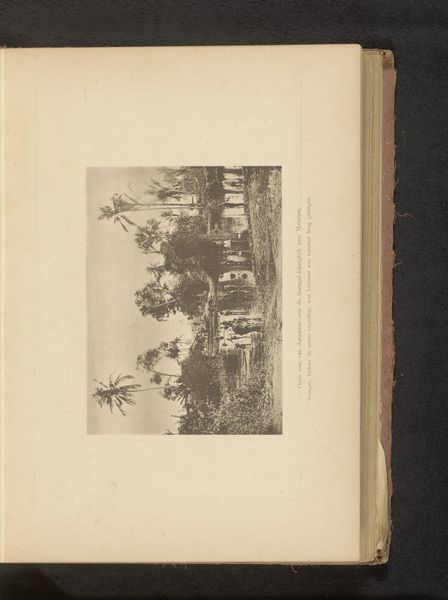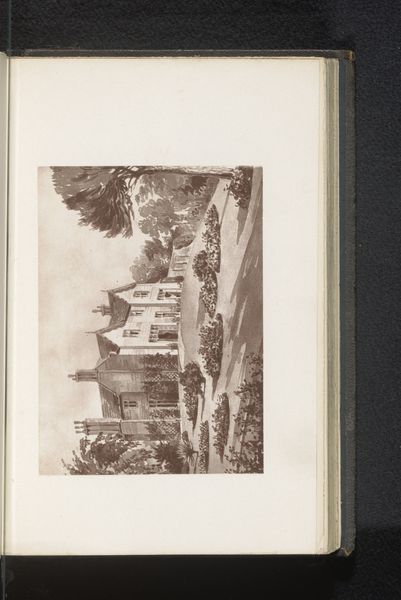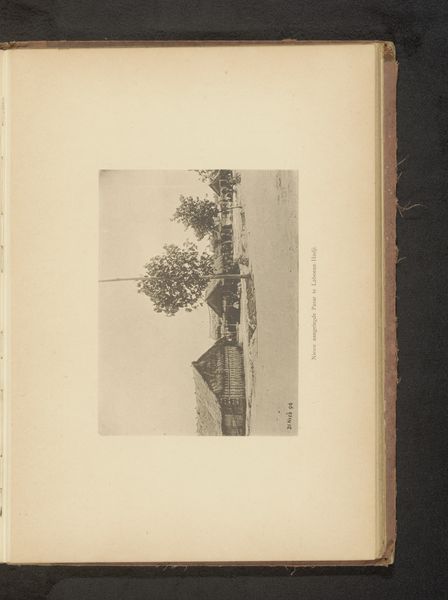
Fotoreproductie van een schildering, voorstellende een gezicht op de pastorie van Stoke before 1876
0:00
0:00
print, photography
# print
#
landscape
#
photography
#
cityscape
#
realism
#
building
Dimensions: height 84 mm, width 116 mm
Copyright: Rijks Museum: Open Domain
Curator: The work before us is entitled “Fotoreproductie van een schildering, voorstellende een gezicht op de pastorie van Stoke,” translating to "Photographic reproduction of a painting, representing a view of the parsonage of Stoke". It dates to before 1876, and is registered here as by an Anonymous maker, consisting of both a print and photography medium. What are your first thoughts on encountering this reproduction? Editor: It has a certain melancholy about it. The sepia tone evokes a sense of faded grandeur. It reminds me of daguerreotypes I’ve seen of estates of that era. I'm thinking about the history ingrained within its walls, but also what the limitations may have been during its time, like who was able to exist safely and happily on the grounds. Curator: Absolutely. The image of the parsonage speaks to the visual culture surrounding the Church and the landed gentry in that period. Consider its function. This photograph is not just an aesthetic object but serves to document and disseminate a specific image of social stability. Editor: And who was this imagery for? Did it project the Church's role? Or was it for personal viewing only, romanticizing such an institution and lifestyle to create a feeling of nostalgia? The framing within what appears to be a book or album only furthers my curiosities on how the elite consumed the information. Curator: Precisely! And by extension, how the emerging photographic industry participated in solidifying power structures through circulating these images. Look at the careful composition – the parsonage, though modest, sits firmly in the landscape. There is something comforting to it as an archive that simultaneously has the power to reveal certain biases. Editor: I agree. The choice of realism lends it an air of authenticity, almost as if inviting the viewer to participate in this vision. But realism never exists in a vacuum. What realities are we not seeing through this lens? What might have been erased from the frame in favor of promoting an establishment agenda? Curator: These are crucial questions. Photography’s rise allowed for broader dissemination of carefully curated visual messages. This reproduction functions as both a window into the past, and as an artifact reflecting how the past was, and continues, to be constructed through imagery. Editor: This photograph and painting within offer an understanding into a specific version of history. One filled with a curated version of peace, which we both realize now, in our current world, isn't as still and idyllic for most as its portrayed. It inspires a different kind of activism to further encourage people to question the role of authority. Curator: A worthy pursuit indeed. I feel this exercise has really given me some food for thought on how photography can reflect historical social constructs. Editor: For me, the sepia tones have painted a desire to learn more about what has been overlooked in similar imagery during the time of its construction and production.
Comments
No comments
Be the first to comment and join the conversation on the ultimate creative platform.

